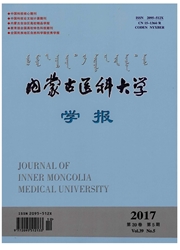

 中文摘要:
中文摘要:
目的探讨神经导航辅助下内镜经蝶窦入路切除复杂垂体腺瘤的临床应用。方法回顾性分析2014年1月~2015年3月在神经导航辅助下内镜经鼻蝶窦入路行肿瘤切除术的23例复杂垂体腺瘤患者,术后进行激素水平、临床症状改善情况及术后并发症的随访。结果术后经病理证实均为垂体腺瘤,16例全切除,7例次全切除;次全切除的患者术后均给予立体定向放射治疗。2例患者分别在随访12个月和14个月时出现肿瘤复发,再次给予内镜经鼻蝶手术治疗,术后继续随访,未见复发。全部病例术后无严重并发症及死亡,随访时间5~20个月。结论对于复杂垂体腺瘤的患者,将神经导航与内镜相结合,可充分发挥各自优势,可提高经蝶窦入路的手术安全性及切除率,减少并发症。
 英文摘要:
英文摘要:
Objective To investigate the neuro-navigation aided endoscopic nasal transsphenoidal removal of complex pituitary adenomas. Methods a analysis in , The clinical data of 23 patients with complex pituitary adenoma underwent neuro-navigation aided endoscopic nasal transsphenoidal tumor resection from January 2014 to March 2015 were analyzed retrospectively. Their postoperative hormone levels, clinical symptoms improved and the postoperative complications were followed up. Results Pathology was confirmed as pituitary adenoma after operation. The tumors were totally removed in 16 patients and subtotally in 7, who were treated by stereotactic radiotherapy. 2 patients had tumor recurrence after the following up 12 months and 14 months and retired endoscopic nasal butterfly surgical resection, no recurrence occurred in the postoperative follow-up, no serious postoperative complications occurred after follow-up from 5 to 20 months. Conclusion Combined neural navigation with endoscopic technology can make full use of each advantage, to improve the operation safety and removal rate, reduce postoperative complications for patients with complex pituitary adenoma.
 同期刊论文项目
同期刊论文项目
 同项目期刊论文
同项目期刊论文
 期刊信息
期刊信息
